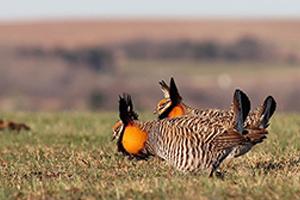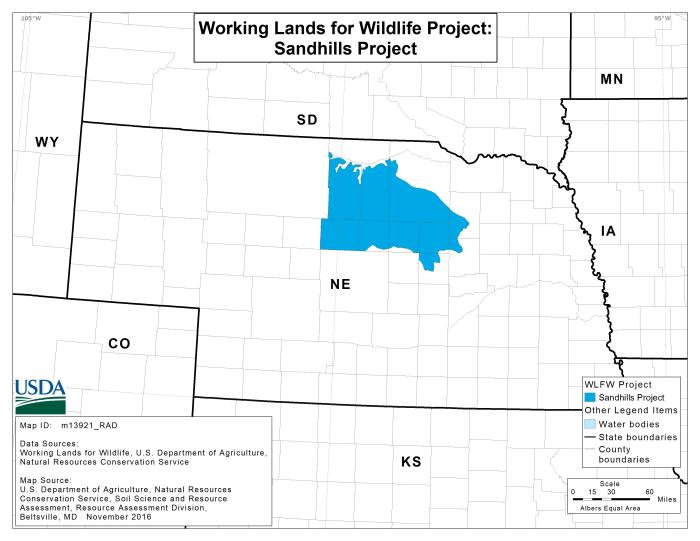Sandhills
The Sandhills landscape of Nebraska is speckled with lakes, wetlands, wet meadows and spring-fed streams.

The Sandhills landscape of Nebraska is speckled with lakes, wetlands, wet meadows and spring-fed streams.
The 19,300-square-mile vegetated sand dune formation in north-central Nebraska serves as an oasis for wildlife, including the greater prairie-chicken and American burying beetle. The Sandhills are also critically important to waterfowl, who nest in the region.
The conversion of rangelands to cultivated crops and the spread of invasives like redcedar are causing habitat loss and fragmentation throughout the Sandhills. To reverse the loss and fragmentation of habitat, NRCS is working with agricultural producers to improve the health of rangelands and to remove invading redcedar trees.
Landowners in the Sandhills of Nebraska are helping restore the Sandhill landscape by improving the health of rangelands through improving the health of the landscape, through using prescribed grazing and removing invading redcedar trees. Through mechanical removal and prescribed burning, producers can remove this threat to the landscape as redcedar trees shade out other plants, which degrades the quality of forage for livestock and habitat for wildlife.

NRCS offers technical and financial assistance to help landowners improve the health of rangelands. This assistance helps producers plan and implement a variety of conservation activities, or practices, that benefit the landscape and many of the game and non-game species that depend on it.
Technical assistance is free to producers. The agency’s staff of experts and conservation partners work side-by-side with producers to develop a conservation plan. Each plan focuses on implementing conservation practices to improve ranching operations while improving rangelands. These plans provide a roadmap for how to use a system of conservation practices to meet natural resource and production goals.
Financial assistance helps producers pay for the adoption of conservation systems. Common conservation practices include prescribed burning, prescribed grazing, conservation cover and brush management.
These efforts in the Sandhills are part of the Working Lands for Wildlife (WLFW) partnership, a collaborative approach to conserve habitat on working lands. WLFW is providing technical and financial assistance through the Environmental Quality Incentives Program, a conservation program of the Farm Bill, the largest funding source for conservation on private lands.
When the health of the Sandhills landscape is improved, many species benefit, including greater prairie-chicken, American burying beetle, eastern and western meadowlark, grasshopper sparrow, Swainson’s hawk, monarch butterfly, upland sandpiper, sharp-tailed grouse and regal fritillary butterfly.


